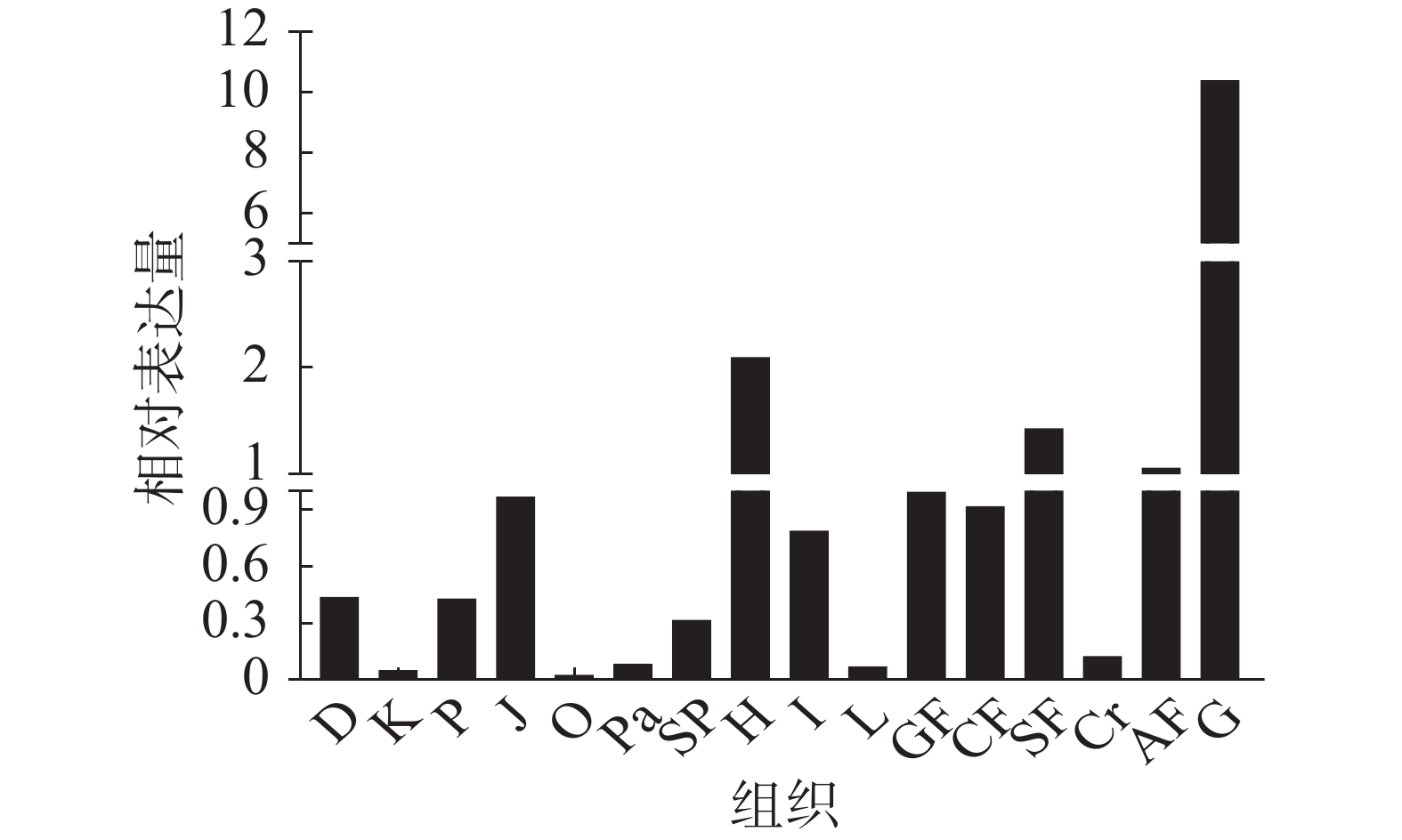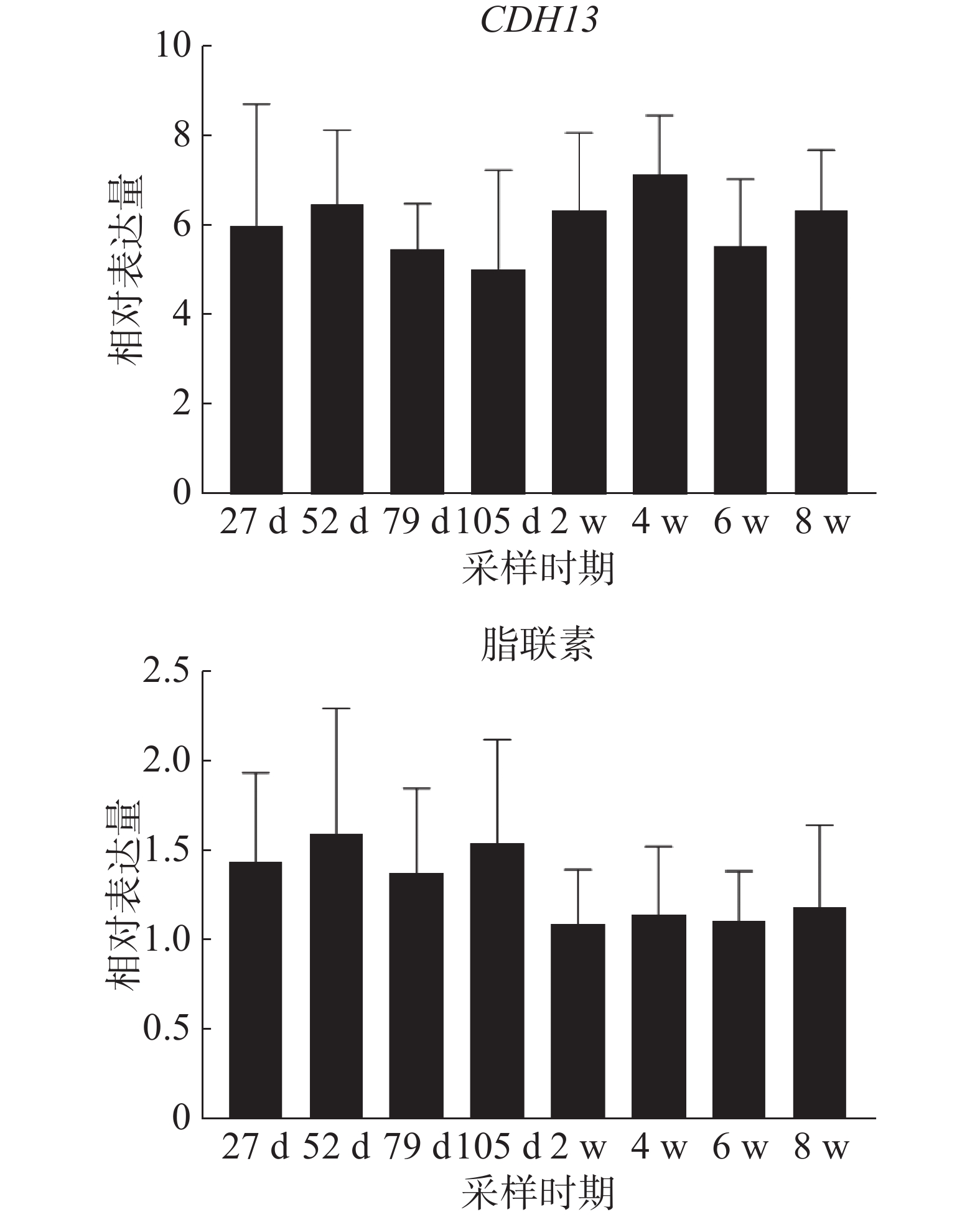-
文昌鸡是海南优质肉鸡品种,具有觅食能力强、耐粗饲、耐热、早熟等特点[1],作为海南四大名菜之一,其皮薄滑爽,肉质肥美,畅销于全国各地及东南亚地区,深受广大生产者和消费者喜爱。但文昌鸡存在腹脂沉积过多的问题,腹脂沉积过多会降低鸡的屠宰率和饲料转化率[2],还影响产蛋率及诱发疾病[3],并影响人类健康,同时废弃的腹脂也给环境造成污染,因此,如何降低腹脂过度沉积是文昌鸡育种需要解决的问题。
脂联素是一种脂肪细胞因子,由成熟脂肪细胞大量分泌,其通过与受体结合,激活下游通路[4]在糖脂代谢、葡萄糖的摄取、脂肪酸氧化等过程中发挥作用[5]。脂联素能够调控生物体的脂肪代谢,是至今发现的唯一与肥胖呈负相关的脂肪细胞特异性蛋白[6]。脂联素受体包括脂联素受体R1和脂联素受体R2、T-钙粘蛋白(CDH13)[7]。由于CDH13可以和六聚体及高分子量的脂联素结合而被认为是脂联素的第三类受体[8]。CDH13与血浆脂联素水平、心血管风险、糖尿病和脂肪肝[9]等肥胖因素有关,但关于其在鸡脂质代谢中的功能研究还未见报道。因此,本研究利用 RT-qPCR的方法检测CDH13基因和脂联素基因在文昌鸡不同组织中及不同时期文昌鸡腹部脂肪组织中的表达情况,旨在为后续深入研究CDH13的功能奠定基础。
-
文昌鸡雌鸡,由海南省文昌市潭牛文昌鸡股份有限公司提供,参照《DB 46/T44—2011,文昌鸡饲养管理技术规程》[10],实施规范的饲养管理,执行正常的免疫程序。从105日龄开始笼养育肥。
-
选取27日龄、52日龄、79日龄、105日龄和笼养育肥2周龄、4周龄、6周龄、8周龄8个饲养阶段的各6只文昌雌鸡,采集腹部脂肪组织装入5 mL冻存管中,迅速放入液氮中速冻后置于−80 ℃冰箱中待用;采集育肥8周龄的3只(随机选取3只)文昌雌鸡的16种组织,每只个体每种组织分别采样装入5 mL冻存管中,迅速放入液氮中速冻后置于−80 ℃中保存。
-
台式高速冷冻离心机(德国艾本德股份公司,Centrifuge 5418 R),常规离心机(大龙兴创实验仪器(北京)股份公司,D1008E),微量移液器(德国艾本德股份公司,Research® plus 系列),微量分光光度计(杭州奥盛仪器有限公司,Nano-100),荧光定量 PCR 仪(杭州朗基科学仪器有限公司,Q1000),电泳仪、电泳槽(美国伯乐有限公司,PowerPac 系列),超低温冰箱(松下电器有限公司,MDF-682)。
TransZol Up(北京全式金生物技术有限公司)、HiScript Ⅲ RT SuperMix for qPCR(南京诺唯赞生物科技有限公司)、ChamQ Universal SYBR qPCR Master MixR(南京诺唯赞生物科技有限公司)、氯仿、无水乙醇、异丙醇、DEPC水。
-
利用Trizol法提取各种组织的总RNA,测定其浓度,用1.5%的琼脂糖凝胶电泳检测总RNA质量。质检合格的总RNA,使用反转录试剂盒反转录成cDNA,保存于 −20 ℃备用。
-
根据鸡NCBI上脂联素基因mRNA 序列(NM_206991),CDH13 mRNA序列(NM_001001760.2)设计表达引物ADIPOQ-F/R、CDH13-F/R。内参基因为TBP、HMBS[11]。引物碱基序列见表1。引物由上海生工生物工程技术服务有限公司合成。
基因 引物序列
(5′→3′)扩增
长度/bpTBP F: GCGTTTTGCTGCTGTTATTATGAG
R: TCCTTGCTGCCAGTCTGGAC122 HMBS F: TCGTGCCAAAGACCAAGAAAC
R: GACACTACAGCCACCCTCCAA118 ADIPOQ F: CAACGAGCAGAACCACTACGACAG
R: CTTCTTGTAGAGGCTGACCTTGACG124 CDH13 F: TAACTGTTGGTGACCGAGATGA
R: CTGTGGAACTGGGACCGTAG237 -
使用SYBR Green荧光染料法,反应体系(10 µL):2 × ChamQ Universal SYBR qPCR Master Mix 5 µL、上下游引物各0.2 µL、cDNA 1 µL、ddH2O 3.6 µL。反应条件:预变性95 ℃ 30 s;循环反应95 ℃ 10 s,60 ℃ 30 s,40个循环反应;熔解反应95 ℃ 15 s,60 ℃ 60 s,95 ℃ 15 s。
-
利用SAS软件对试验数据进行统计分析,P<0.05差异显著;用Graphpad Prism 8.0软件绘制图表。
-
以笼养育肥8周龄文昌雌鸡(随机选取3只)的16种组织为实验材料,每只个体每种组织分别提取总RNA后,每种组织按照等量RNA进行混合,得到该种组织的混合总RNA样品后,进行反转录。RT-qPCR实验结果显示,CDH13基因在各个组织中均有表达,在心脏(H)、回肠(I)、肌胃周围脂肪(GF)、嗉囊周围脂肪(CF)、皮下脂肪(SF)、小脑(Cr)、腹部脂肪组织(AF)及肌胃(G)中表达量较高(图1)。
脂联素基因在空肠(J)、心脏(H)、回肠(I)、肌胃周围脂肪(GF)、嗉囊周围脂肪(CF)、皮下脂肪(SF)、腹部脂肪组织(AF)、及肌胃(G)中表达量较高(图2),与CDH13定性表达结果相似。
-
27日龄、52日龄、79日龄、105日龄和笼养育肥2周龄、4周龄、6周龄、8周龄每个时期随机选取6只文昌雌鸡,采取腹部脂肪组织提取总RNA后进行反转录。RT-qPCR实验结果(图3)显示,CDH13在文昌鸡腹部脂肪组织生长发育各个时期中均稳定高表达,并育肥4周龄时,表达量达到最高。
-
脂肪组织作为一种内分泌器官,能够分泌多种细胞因子。脂联素是机体的脂质代谢调控网络中的重要调节因子。CDH13是脂联素的受体之一。CDH13和脂联素基因定性表达结果显示,CDH13基因在文昌鸡各个组织中广泛表达;其在心脏、回肠、小脑、脂肪组织及肌胃中表达量较高。脂联素在空肠、心脏、回肠、脂肪组织及肌胃中表达量较高,这与前人的研究结果一致。YUAN等[12]的研究结果显示脂联素在脂肪组织、胃、皮肤和心脏中高度表达。鹅脂联素在脂肪、心脏和肌胃中高度表达,在小肠、腺胃、肾等组织中度表达,而在肝脏、脾脏和卵巢等组织低表达[13]。MADDINENI等[14]研究发现鸡脂联素在脂肪组织、肝脏、垂体前叶、间脑、骨骼肌、肾脏、卵巢和脾脏均表达,并在脂肪组织中表达最高,其次是肝脏、间脑、肾和骨骼肌。
本研究中CDH13和脂联素基因定量表达结果显示,脂联素在育肥后文昌鸡腹部脂肪组织中的表达量均低于育肥前。在人、猴子、小鼠中,脂肪组织脂联素基因表达量随脂肪过度沉积而下降,随体重下降而上升[15]。育肥期是文昌鸡脂肪快速沉积的时期,育肥期的脂肪含量显著高于育肥前,这可能也是育肥后腹部脂肪组织中脂联素的表达量低于育肥前的原因。CDH13是脂联素的受体,CDH13定量表达结果和脂联素相似,均在脂肪组织中高表达,暗示在脂肪组织中,CDH13基因可能发挥一定的作用,但作用机制尚不明确,有待深入研究。目前关于CDH13的研究较少,因此本研究检测CDH13在文昌鸡多种组织和腹部脂肪组织生长发育过程中的表达情况,可为今后CDH13基因的深入研究奠定基础。
-
脂联素受体CDH13在文昌鸡各个组织中均有表达,在心脏、回肠、脂肪组织、小脑及肌胃组织中高度表达。在文昌鸡腹部脂肪组织生长发育过程中,CDH13持续高表达。
Expression pattern of adiponectin receptor gene CDH13 in Wenchang Chickens
doi: 10.15886/j.cnki.rdswxb.2022.06.003
- Received Date: 2022-01-17
- Accepted Date: 2022-04-07
- Rev Recd Date: 2022-03-15
- Available Online: 2022-04-24
- Publish Date: 2022-11-28
-
Key words:
- Wenchang Chicken /
- CDH13 /
- adiponectin receptor /
- expression pattern
Abstract: Wenchang Chicken is a local excellent broiler breed in Hainan, which has the advantages of strong adaptability, heat resistance and good meat quality. At present, there is a problem with high abdominal fat rate in Wenchang Chickens. Excessive fat deposition is undesirable since it decreases feed efficiency, and affects human health. Adiponectin, which is secreted by mature adipose cells, plays an important role in lipid metabolism. CDH13 is the third type of receptor for adiponectin, and the function of chicken CDH13 has not yet been reported. Therefore, the expression pattern of CDH13 in different tissues and during the growth and development of the abdominal adipose tissue of Wenchang Chickens was determined by using the RT-qPCR. The results showed that the gene CDH13 had higher mRNA abundance in the heart, ileum, adipose tissue, cerebellum and gizzard, and that adiponectin had similar trend of transcriptional levels to CDH13. The gene CDH13 was stably and highly expressed during the growth and development of abdominal adipose tissue, and its expression level was the highest at the age of the fourth week in the fattening period.
| Citation: | WANG Ying, WU Hongfen, ZHANG Ying, WANG Liuhao, NA Wei, WU Kebang. Expression pattern of adiponectin receptor gene CDH13 in Wenchang Chickens[J]. Journal of Tropical Biology, 2022, 13(6): 558-561. doi: 10.15886/j.cnki.rdswxb.2022.06.003 |


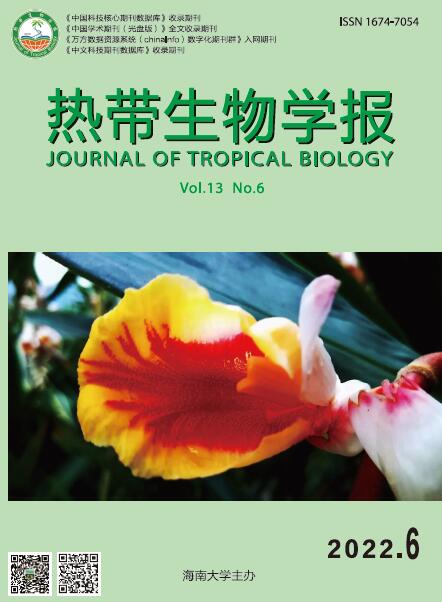


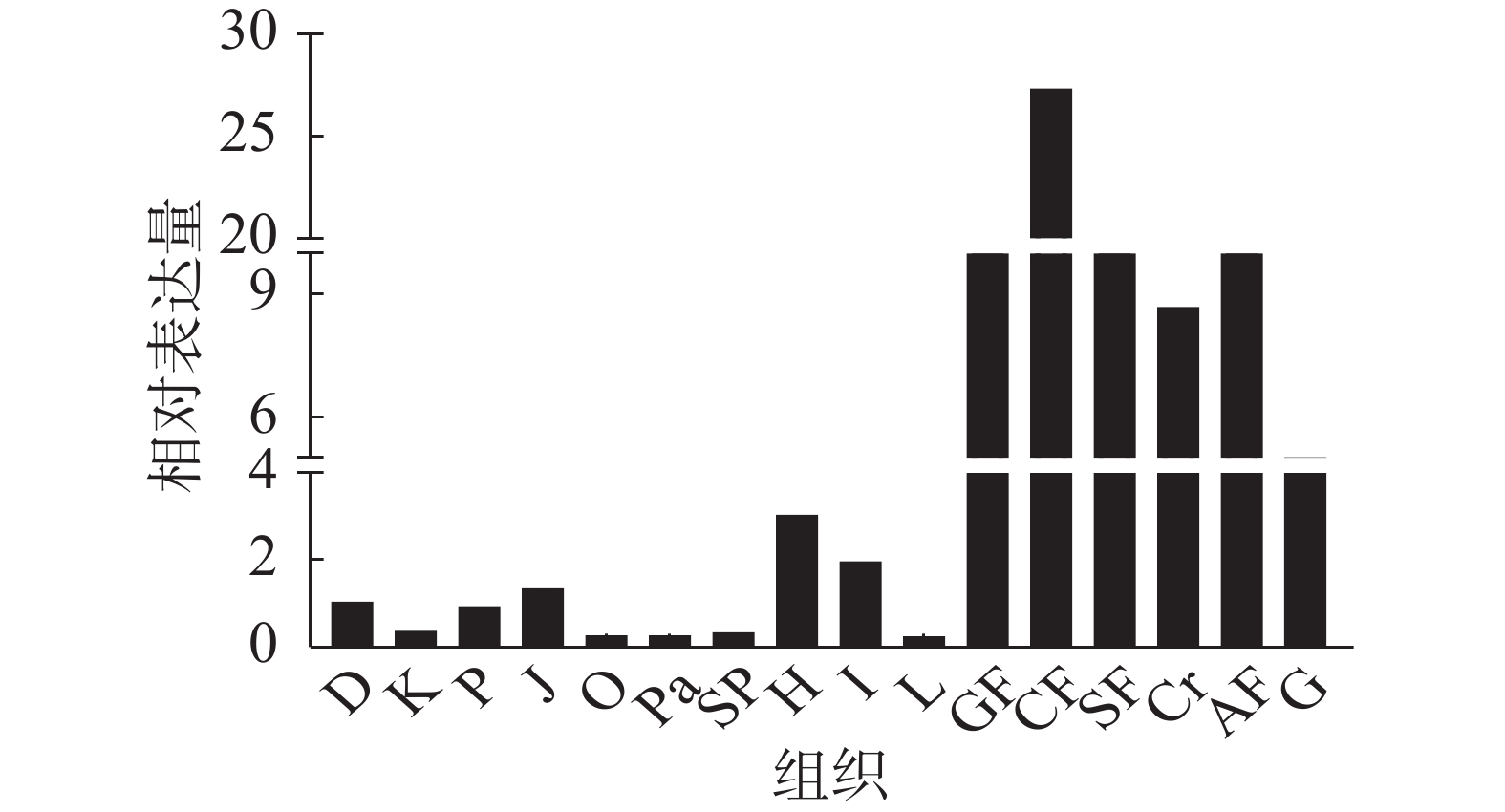

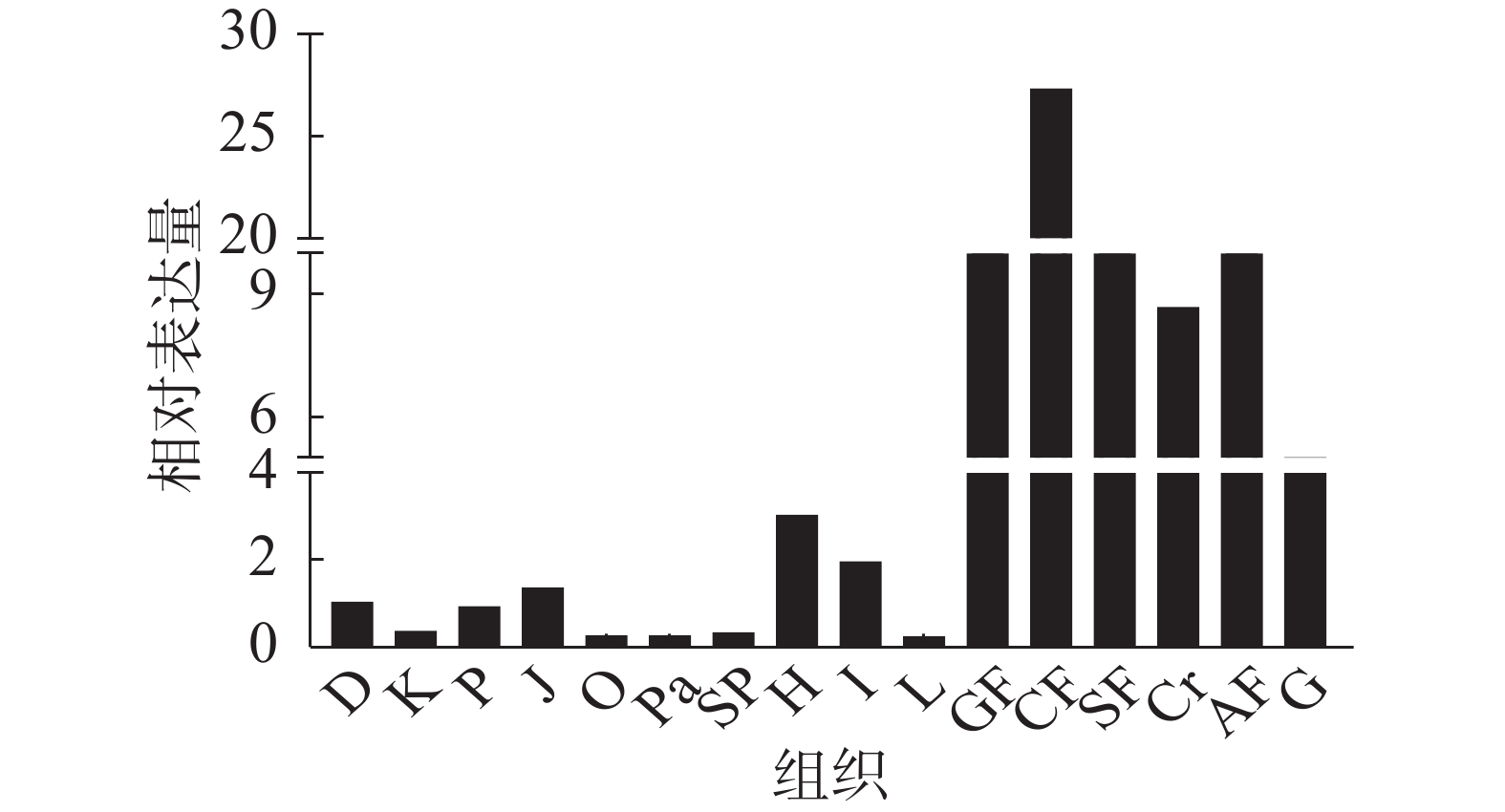
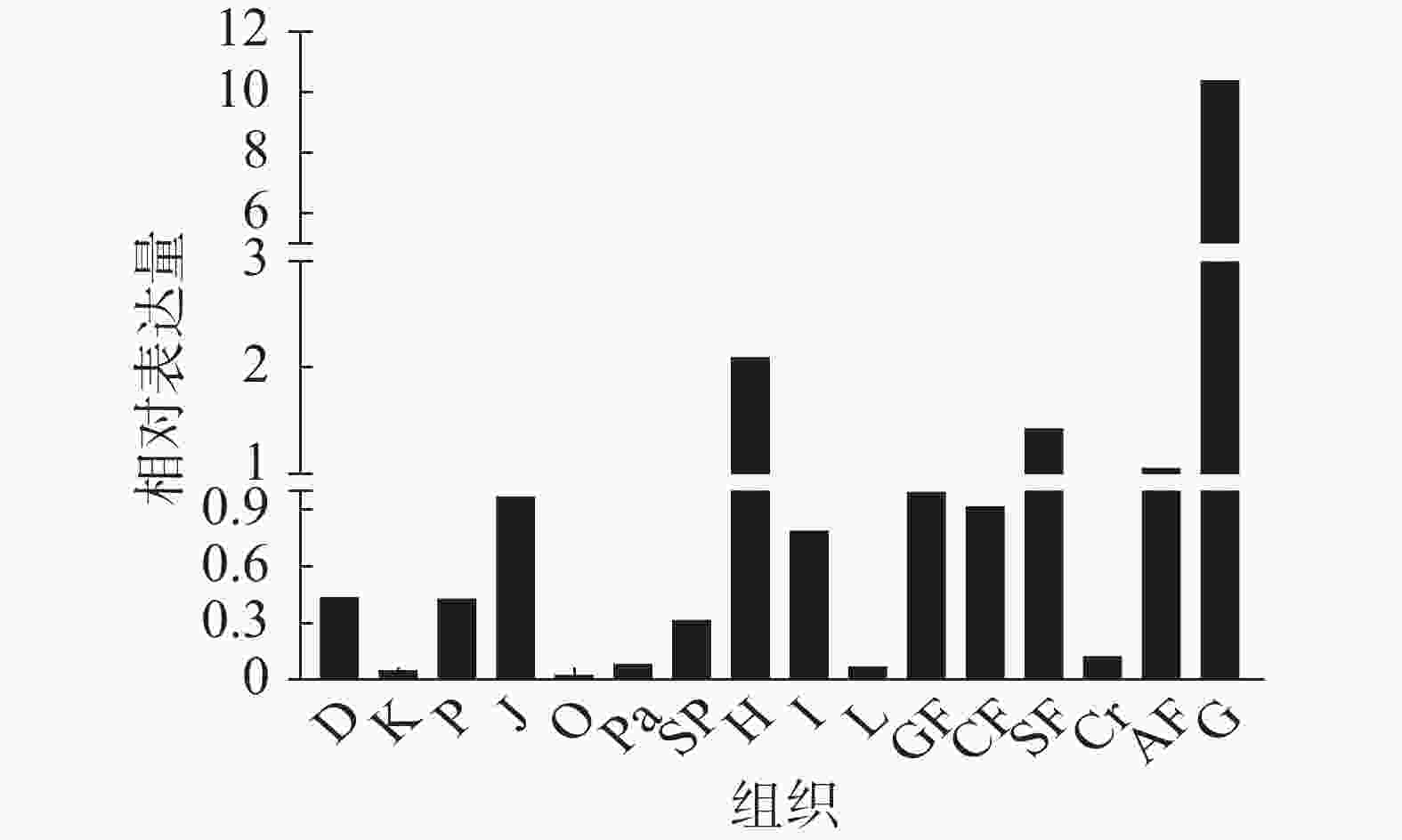
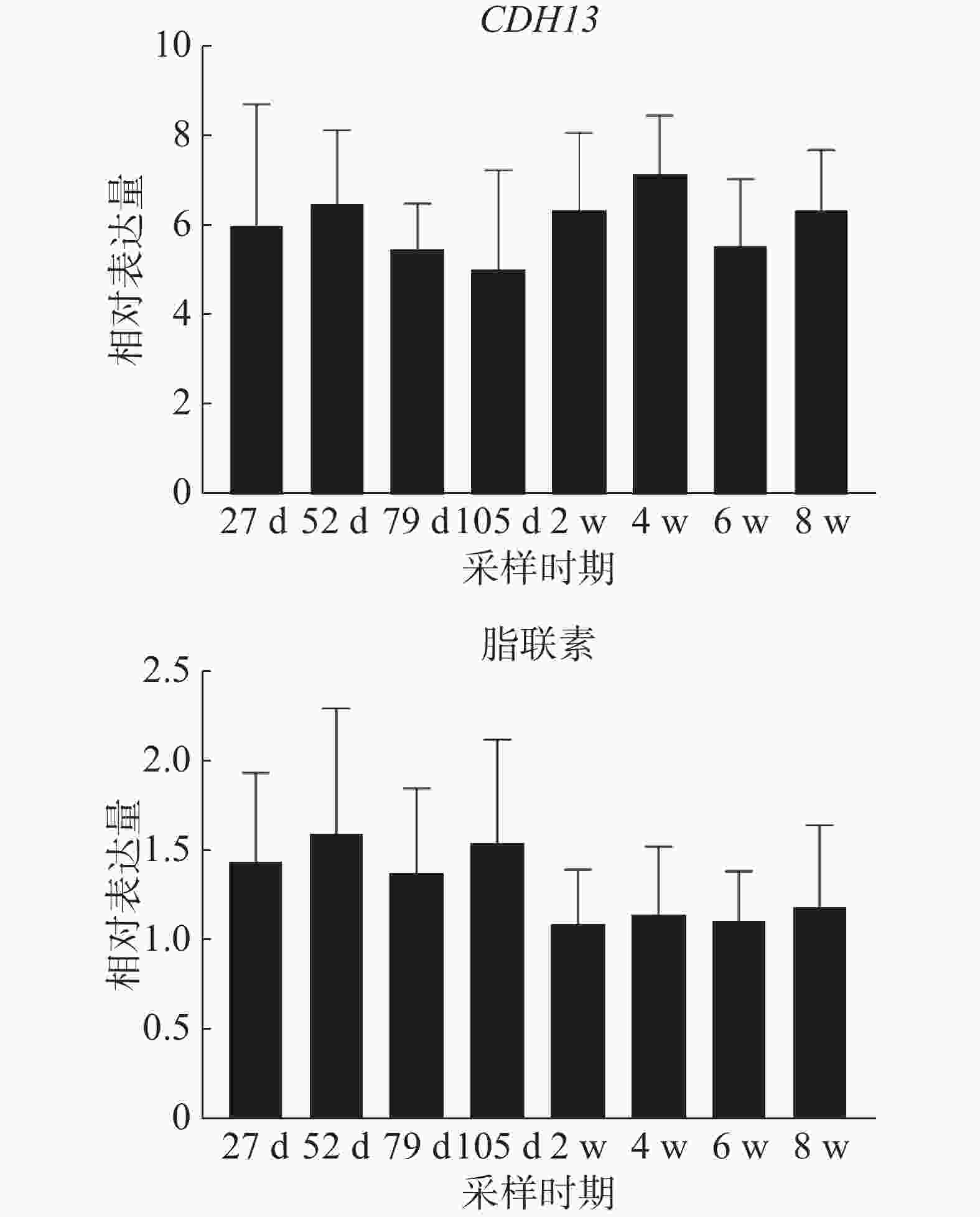
 DownLoad:
DownLoad:
